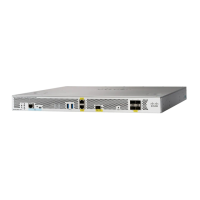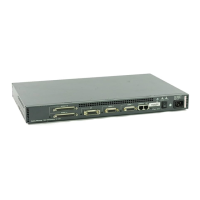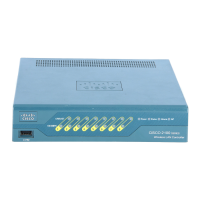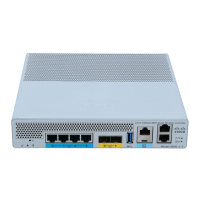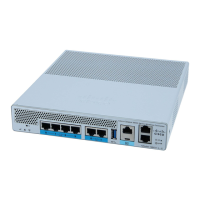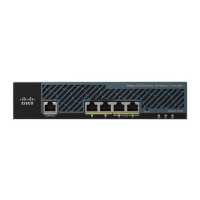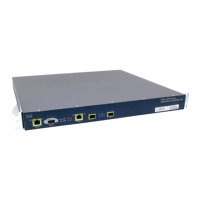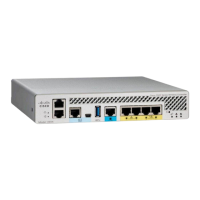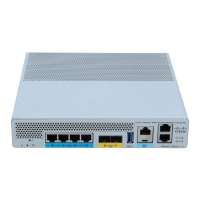4-54
Cisco Wireless LAN Controller Configuration Guide
OL-17037-01
Chapter 4 Configuring Controller SettingsWireless Device Access
Configuring Voice and Video Parameters
U-APSD
Unscheduled automatic power save delivery (U-APSD) is a QoS facility defined in IEEE 802.11e that
extends the battery life of mobile clients. In addition to extending battery life, this feature reduces the
latency of traffic flow delivered over the wireless media. Because U-APSD does not require the client to
poll each individual packet buffered at the access point, it allows delivery of multiple downlink packets
by sending a single uplink trigger packet. U-APSD is enabled automatically when WMM is enabled.
Traffic Stream Metrics
In a voice-over-wireless LAN (VoWLAN) deployment, traffic stream metrics (TSM) can be used to
monitor voice-related metrics on the client-access point air interface. It reports both packet latency and
packet loss. An administrator can isolate poor voice quality issues by studying these reports.
The metrics consist of a collection of uplink (client side) and downlink (access point side) statistics
between an access point and a client device that supports CCX v4 or later. If the client is not CCX v4 or
CCXv5 compliant, only downlink statistics are captured. The client and access point measure these
metrics. The access point also collects the measurements every 5 seconds, prepares 90-second reports,
and then sends the reports to the controller. The controller organizes the uplink measurements on a client
basis and the downlink measurements on an access point basis and maintains an hour’s worth of
historical data. To store this data, the controller requires 32 MB of additional memory for uplink metrics
and 4.8 MB for downlink metrics.
TSM can be configured through either the GUI or the CLI on a per radio-band basis (for example, all
802.11a radios). The controller saves the configuration in flash memory so that it persists across reboots.
After an access point receives the configuration from the controller, it enables TSM on the specified
radio band.
Note Access points support TSM in both local and hybrid-REAP modes.
Using the GUI to Configure Voice Parameters
Follow these steps to configure voice parameters using the GUI.
Step 1 Make sure that the WLAN is configured for WMM and the Platinum QoS level.
Step 2 Disable all WLANs with WMM enabled and click Apply.
Step 3 To disable the radio network, click Wireless and then Network under 802.11a/n or 802.11b/g/n, uncheck
the 802.11a (or 802.11b/g) Network Status check box, and click Apply.
Step 4 Click Vo ice under 802.11a/n or 802.11b/g/n. The 802.11a (or 802.11b) > Voice Parameters page appears
(see Figure 4-17).

